Blog. Ideas for better meetingsProfessional Meeting Facilitation
A Short (and personal) History Of Leading Change
04/09/13 09:29 Filed in: Leadership... | Leading Change...
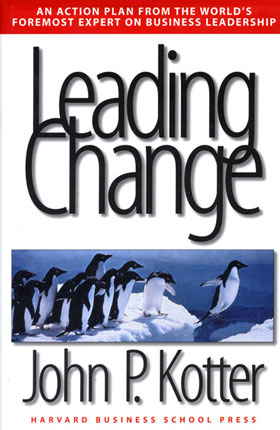
Change. Now a permanent process, not a one off event. A brief review of how leading change has changed.
Back in the somewhat more sedentary times of 1996, US academic John Kotter published Leading Change.
By examining the change efforts of 100 companies he sought to understand the successes and failures leaders made during change and codify an approach leaders could adopt when leading large organisational change programmes.
His approach was summarised in an eight stage process.
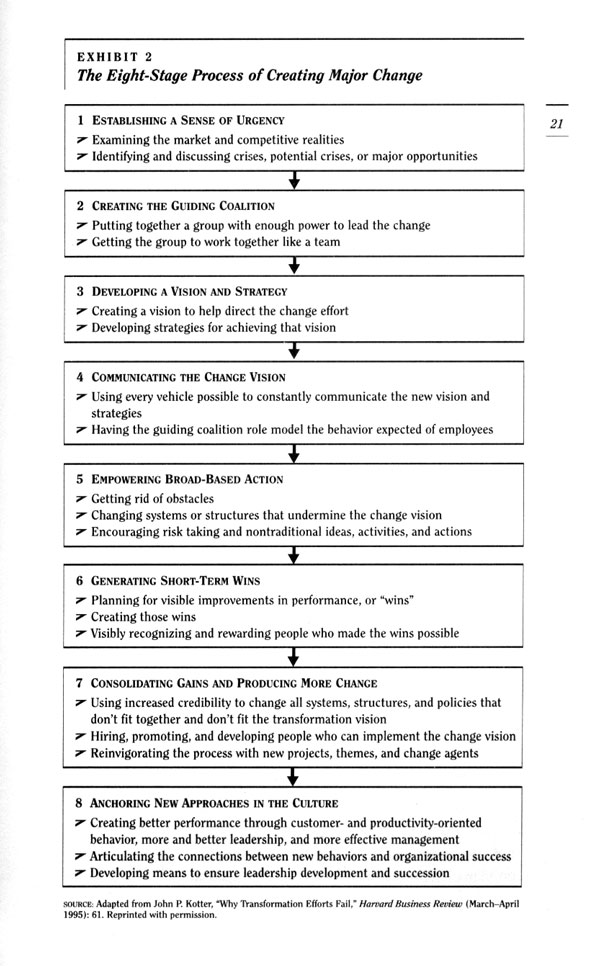
© John Kotter
At the time Kotter published I was a director of the Design Council and we looked to Kotter’s ideas to help us think about restructuring the organisation to better fit the vision and strategy that we had inherited after the Sorrell Review.
Having a ‘map’ to think about the steps was helpful, the logic implicit in Kotter’s model was useful and the journey we undertook was better for it.
Times change faster than leading change?
Looking back, Kotter’s 1996 account of leading change seems to fit less well in the very turbulent times we now live in.
Kotters model lacks the agility the current pace of change requires.
It looks a bit like a single use process, to switch on when change is needed, and then it’s back-to-business-as-usual.
To be fair to Kotter, in 2012 he gave his model a spring clean and added a couple of extra ideas to his original thinking, but his 8 step model is still the back bone of his account of leading change.
His recent paper was published in the Harvard Business Review, and is called Accelerate. Read it at HBR, or download a copy free from Kotters website, it’s worth a look.
Living Vision, Emergent Strategy
In 2006 when I was working with the Department for Education and Skills Innovation Unit I came across the Bridge Model of Change Leadership.
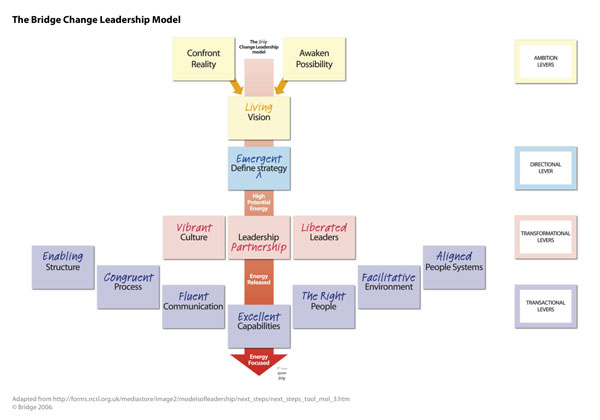
© Bridge 2006
What stood out in this account of leading change were the ideas that vision might be living (and therefore evolving, growing) and that strategy might be emergent, (and therefore able to change).
A model of change able to adapt to change. Brilliant.
The other two features of this model that I liked are the idea of leadership partnerships, and that it asks questions at the level of operation (the ‘Transaction levers&rsquo
In a networked world, leadership can no longer simply be leadership of employees, but leadership with partners, suppliers, even competitors or customers.
Leadership Partnerships. Brilliant.
A Resilience Architecture
Of course there’s no one right way of leading change. What might work for a charity, might not work for a large corporation or a family business. But there might be some common principles.
I came across a model created by a John Caswell and Hazel Tiffany from Group Partners.
They call it a resilience architecture.
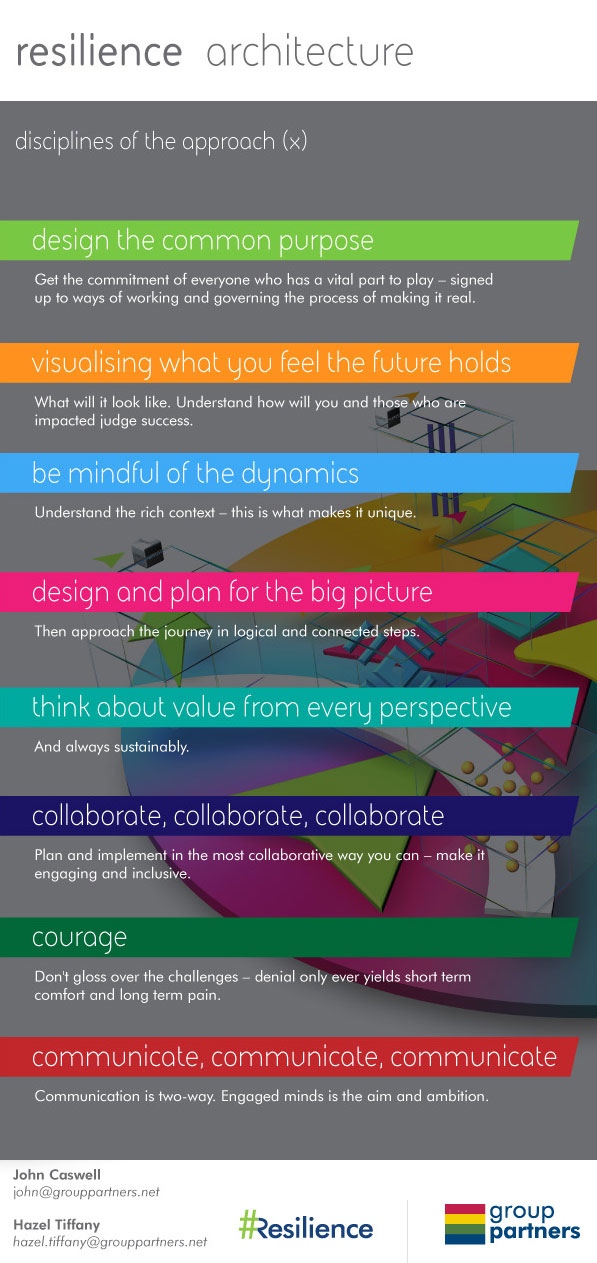
© Group Partners 2013
I’m not sure what they mean by a ‘resilience architecture’ but to me it looks like an excellent set of ideas to adopt while leading change. I know John, and he’s an inveterate model builder, so while you’re here have a look at his 21st Century credo, then we’ll look for any common ideas.
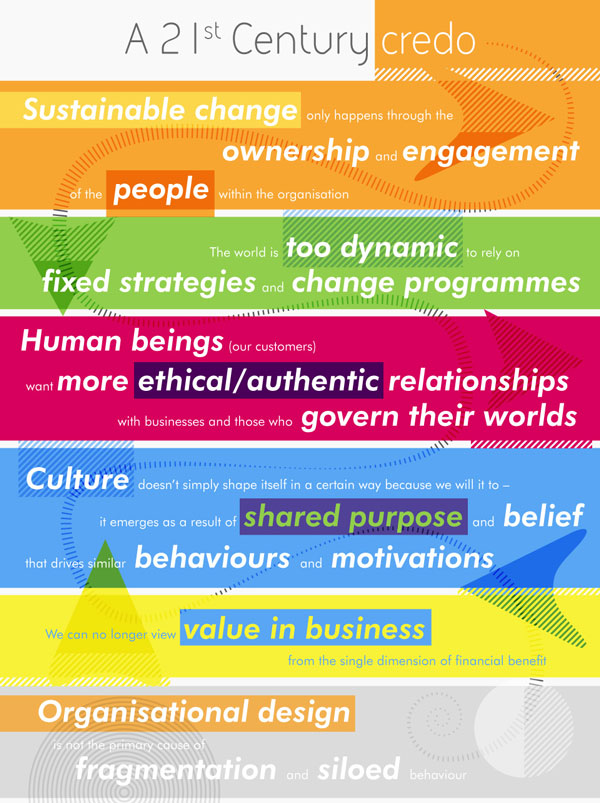
© Group Partners 2013
Principles
Looking across the ideas about change leadership from a management guru and two businesses that offer very different approaches to change management, what conclusions can be made? (Or if I stole the best bits, with the experiences and prejudices I inevitably hold what principles would I draw out?)
1. Understand the changing context
2. Embrace participation and collaboration
3. Seek purpose and meaning
4. Be agile, fluent and allow emergence
5. Real communication
6. Learn alone. Lean together.
I’ve been lucky enough to work with some brilliant people in ‘ProMeeting change processes’, often using the ideas of participatory leadership.
There seems little doubt change will continue to place demands on us all, and that change leadership will need to be a competency we’ll all need to be brilliant at.
No doubt the ideas that underpin change will change too, but I’d bet some ideas will remain timeless.
© 2020 ProMeet